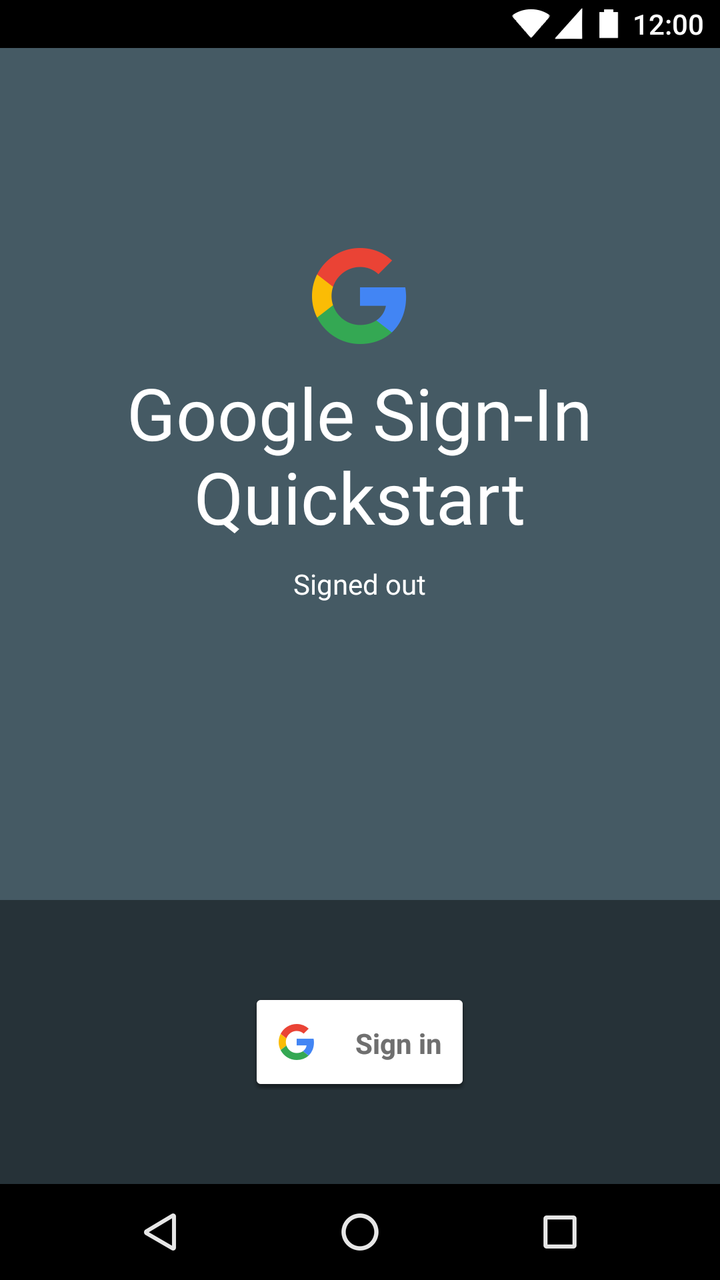השתמשו באפליקציה לדוגמה של Android כדי לראות איך פועלת הכניסה, או מוסיפים 'כניסה' באפליקציה הקיימת.
חובה: הגרסאות האחרונות של Android Studio וגם Google Play Services.
אחזור הפרויקט
אם זו הפעם הראשונה שאתם משתמשים בשירות לדוגמה של שירותי Google, תוכלו להציץ במאגר של Google-services.
$ git clone https://github.com/googlesamples/google-services.git
פותחים את Android Studio.
בוחרים באפשרות File > (קובץ >) פותחים, מדפדפים למקום שבו שכפולם את
מאגר google-services, ופתוח
google-services/android/signin
הגדרת פרויקט במסוף Google API
- פותחים פרויקט קיים ב-API Console, או יוצרים פרויקט אם עדיין אין לכם פרויקט.
- בדף מסך ההסכמה של OAuth, מוודאים שכל המידע מלא ומדויק.
-
בדף Credentials, יוצרים מזהה לקוח מסוג Android. שם החבילה של האפליקציה לדוגמה הוא
com. נזדקק ממך גם ל גיבוב SHA-1 מטביעת האצבע של אישור החתימה. מידע נוסף זמין במאמר אימות הלקוח..google .samples .quickstart .signin -
בדף Credentials, יוצרים מזהה לקוח מסוג Web application. אפשר להשאיר את השדות Authorized JavaScript Origins ו-Authorized redirect URIs ריקים. באתר הזה
מזהה הלקוח נדרש על ידי
IdTokenActivityובדוגמהServerAuthCodeActivityדוגמאות. באפליקציה אמיתית, מזהה הלקוח הזה ייצג את שרת הקצה העורפי של האפליקציה. -
מעתיקים את מזהה הלקוח ומדביקים אותו בקובץ
strings.xmlשל הפרויקט:<string name="server_client_id">YOUR_SERVER_CLIENT_ID</string>
הרצת הדוגמה
עכשיו אפשר ליצור את גרסת ה-build של הדוגמה ולהריץ אותה מ-Android Studio.
יוצרים את הדוגמה, לוחצים על לחצן ההפעלה ובוחרים מכשיר או אמולטור עם הגרסה האחרונה של Google Play Services.

איך זה עובד
האפליקציה יוצרת קובץ GoogleSignInClient ומציינת בו את אפשרויות הכניסה הנדרשות. לאחר מכן, כשלחצן הכניסה
לוחץ על האפליקציה, מפעיל את הכוונה להיכנס לחשבון,
המשתמש צריך להיכנס באמצעות חשבון Google.
// Configure sign-in to request the user's ID, email address, and basic // profile. ID and basic profile are included in DEFAULT_SIGN_IN. GoogleSignInOptions gso = new GoogleSignInOptions.Builder(GoogleSignInOptions.DEFAULT_SIGN_IN) .requestEmail() .build();
// Build a GoogleSignInClient with the options specified by gso. mGoogleSignInClient = GoogleSignIn.getClient(this, gso);
private void signIn() {
Intent signInIntent = mGoogleSignInClient.getSignInIntent();
startActivityForResult(signInIntent, RC_SIGN_IN);
}השלבים הבאים
כדי לראות איך אפשר להטמיע כניסה באמצעות חשבון Google מומלץ לעיין במדריך ההטמעה שלנו.
הייתה לך חוויה טובה? נתקלתם בבעיה? נשמח לשמוע ממך.
